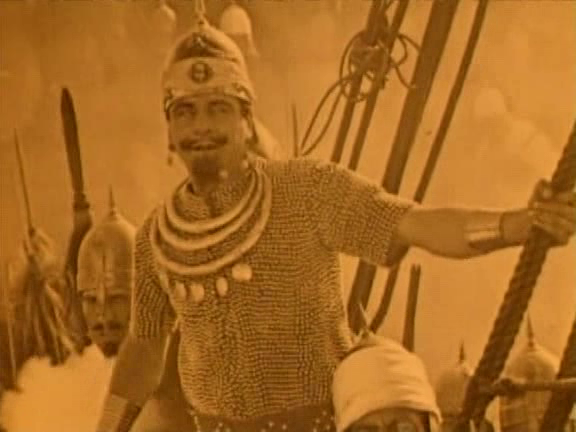A Century of Film is an ongoing series where Devin Wilger watches one movie from each year between 1917 and today. For the year of 1924, the film is The Sea Hawk, which is not about a boat, no matter what he said last time.
While I’ve never bought the idea that big blockbusters are meant to be mindless entertainment for people to stop thinking for a couple hours - why would you ever want to turn your brain off? Thinking about film is the best part of watching it - I do understand the appeal of an expensive, if stupid, summer blockbuster. The Fate of the Furious, for a recent example, promises a scene where Ludacris is chased by a submarine, and while there’s nothing really intelligent about Ludacris being chased by a submarine, it’s fun. You don’t see that kind of thing every day, and while I don’t find much joy in a purely mindless film, I do understand the joy that can be generated by an escapist film, something that gives audiences an experience far away from reality.
That is why I understand how 1924’s The Sea Hawk could have taken home the most money of any film from the year. I don’t think it’s a very good film, but it does contain certain pleasures, all of which are derived from being a very expensive film. The appeal is chiefly is that it’s giving you the 1924 version of Ludacris being chased by a submarine, which is taking you to a place and time that can’t be easily accessed in the audience’s reality.
This is the story of a man named Sir Oliver Tressilian (Milton Sills), who everyone else in the film seems to want to kill for some reason. He’s engaged to wed Lady Rosamund Godolphin (Enid Bennett), who has a hot-tempered brother named Peter (Wallace Macdonald) who spends his time in the film trying to fight everyone. Her guardian, Sir John Killigrew (Marc McDermott) also hates Tressilian because he thinks he’s a ruffian, to the point where he challenges him to a duel. There’s also his brother Lionel (Lloyd Hughes), who wants to marry Oliver’s fiance, kills her brother - who was wandering around trying to fight anyone who could breathe at the time - and then sells Oliver into slavery in order to cover up the murder. Oliver eventually becomes a Muslim pirate called the Sea Hawk, and then a new group of people want to kill him and marry Rosamund, because everyone in the world is interested in precisely those two things.
The plot is there mostly as a delivery service for what people want, which is swordfighting and swashbuckling, exotic locals and exquisite costumes. Everyone’s rich for the sake of having some really elaborate Elizabethan costumes, everyone’s married to the sea to show off the replica galleons that director Frank Lloyd had built for the production. There are loads of extras, lots of expensive sets and locations, the money oozes off the screen. It’s a triumph of production design, the value of the film is entirely in the look, it’s almost better in still frames than it is in action.
The swordfighting is poorly choreographed, the acting is cheesier than Picton, Ontario when they’re hosting the Great Canadian Cheese Festival. While there are several schools of acting in silent films, through the course of this project I have not seen anyone put in a more over-the-top and hammy performance than Milton Sills here - he emotes so wildly one wonders if it’s sarcasm. Perhaps this is why everyone in the film wants to kill him, or maybe it’s just a script that is in constant need of villains but filled with characters who have no reason to be villainous.
But then again, nobody has claimed Vin Diesel is one of the world’s great thespians, and nobody is claiming that Fate of the Furious has a script for the ages. No, they’re there for the spectacle. Same deal with The Sea Hawk in 1924, this is a film where the spectacle gives it value. It’s a film that looks expensive, and doubtless was expensive, and expensive in an opulent and flashy way. The action isn’t great, but the spectacle is, and watching a boat full of fighting extras has its pleasures.
Some things never change, and one of those things is that audiences love a film that gives them something completely different from the average day. The Sea Hawk might be bad by most traditional measures, but it can be worth seeing, just to see what could be accomplished with a big spectacle in the silent era.
Next time, while I have yet to decide what I’m watching after The Gold Rush, I do know that’s the film for 1925.



